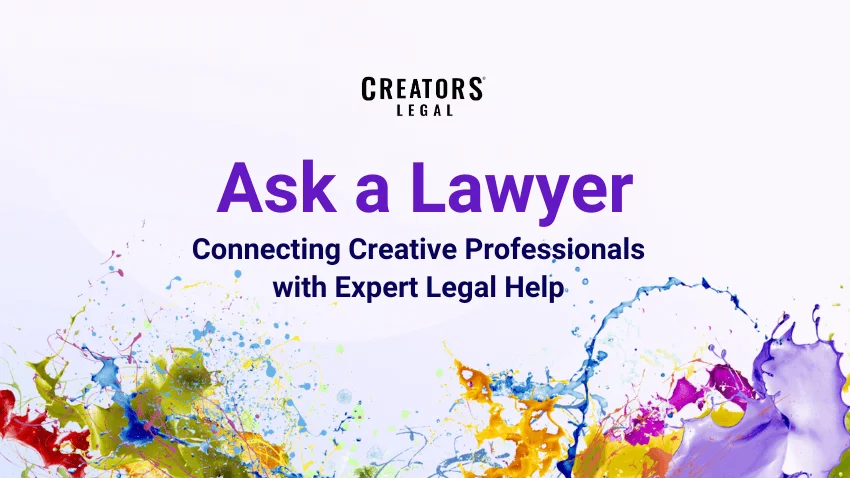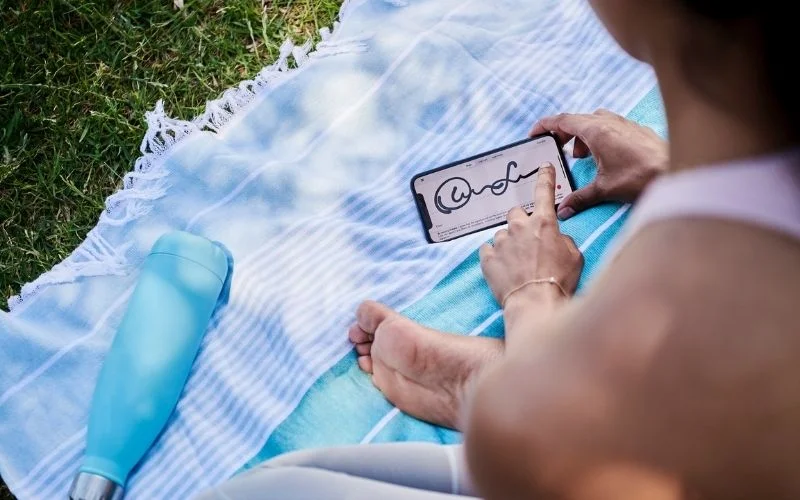Digital artists have made millions of dollars selling images as NFTs or unique digital tokens that trade on a blockchain and are frequently bought and sold in Ethereum, the industry’s native currency.
According to market tracker DappRadar, global NFT sales topped $25 billion in 2021. The most expensive was a $69 million digital artwork created by Beeple and sold at Christie’s in March. However, the increase in sales has also increased “thefts.”
Detractors of the NFT market frequently boast about “stealing” millions of dollars worth of NFTs by just right-clicking and saving the image. The “right-click savers” are, at best, annoyances for NFT owners. They are referred to as thieves in the worst-case scenario.
However, the legality of copying and pasting an NFT is more problematic.
Is ‘right-click and save’ an NFT legal?
Since there are few systems where NFTs may be used effectively, most of them now have limited capability. As a result, the most common application for digital images these days is to utilize them as profile pictures on social media sites like Twitter. However, when users right-click and save NFT profile images to use as their own, Twitter has become a hotbed for NFT “stealing.”
“Right-clicking and creating a copy without a license constitutes a copyright infringement,” says Adrian Lawrence, the Asia Pacific technology, media, and telecommunications group leader at Baker McKenzie. ‘Let’s just call it a robbery.’
This “copyright infringement” isn’t exactly stealing in the traditional sense. An NFT thief makes a replica of an image, but the original is still owned by and accessible to the NFT buyer. Indeed, some crypto fans contend that right-clicking and saving an NFT is no different than photographing the Mona Lisa.
If you start utilizing that photo of the Mona Lisa or that copy of an NFT as your profile picture, you’ve crossed the line into legal grey territory.
“Some uses, especially nonprofit and not-for-profit applications, will not necessarily be infringing…
“However, selling [a duplicated NFT] by printing it on T-shirts, for example, would very certainly be,” Lawrence says. Even then, the victim of the crime isn’t always the owner of the NFT in a legal sense.
Who has ownership of an NFT’s copyright?
The fine print of the smart contract carved inside the digital token determines exactly what you get when you acquire an NFT. An NFT can sometimes be used as a voucher that can be redeemed for a tangible item, but most of the time—especially in the case of artists who create NFTs of their work—it is merely a receipt connected to a digital image.
“What you’re really getting in a regular NFT sale is that one instance of the image, along with a certificate of purchase,” Tonya Evans explains in Nilay Patel’s podcast, Decoder. “You’re not buying the underlying rights to utilize that work in most circumstances.” The artist will be the owner of the copyright.”
Physical art ownership works similarly in the actual world. Last year, some crypto fans paid $3 million for what they thought were the rights to a rare illustrated version of Dune. They had, in fact, recently purchased the book. The collective’s intention to produce and sell derivative products as NFTs was thwarted since they owned the very expensive book. The book’s author held those rights.
Similarly, a person who right-clicks and saves an NFT may be infringing on the artist’s copyright, but the artist, not the NFT’s owner, will have to take legal action to stop them.
Who is in charge of safeguarding NFT rights?
By developing an NFT in the first place, an artist may be infringing on a copyright or trademark claim. For example, Nike sued StockX, a secondhand sneaker marketplace, for trademark infringement after the marketplace minted and sold Nike footwear NFTs without the brand’s consent on Thursday.
Nike stated the StockX transaction had “raised prices” and that the “murky terms of purchase and ownership” had hurt Nike’s business reputation. Nike wants to produce its own line of NFT footwear. The Nike complaint is only the latest in a long line of legal battles over who owns NFTs and how they should be used.
Miramax sued film director Quentin Tarantino in November for manufacturing NFTs for his 1994 film Pulp Fiction, which Miramax produced. A few months before, Hermès sued Mason Rothschild, an artist, for producing NFTs of the French company’s Birkin bags.
So far, NFT cases have focused on individuals who generate, or mint, the digital assets rather than markets like OpenSea, where anyone can produce, buy and sell them. However, as the popularity of NFTs grows, those marketplaces will be forced to shoulder more responsibility.
“There are still some important legal problems about what responsibility a platform should have for the transactions that it supports,” Tonya adds, noting that the discussion dates back 25 years when music labels sued Napster for allowing users to trade music freely.
Napster was ultimately found to be accountable for monitoring the content on its platform by the courts. NFT markets like OpenSea may face the same fate shortly.
What to do if someone steals my artwork?
Fortunately, copyright regulations in North America ensure that anything you produce is protected from the minute it is generated. Therefore, you do not need to register your artwork in Canada or the United States.
Copyright in Canada lasts 50 years after death, while in the United States it lasts 70 years. After that, the work is released into the public domain and can be used by anybody. This implies that while it is lawful to print a t-shirt with the Mona Lisa, Mickey Mouse is protected until 2036, 70 years after Walt Disney’s death.
Part of the issue is that many NFT marketplaces are open platforms where anybody may produce and publish NFTs, making it difficult to be cautious enough to safeguard artists’ rights, given the volume of uploads.
They need to do a better job of checking that the seller does, in fact, own the copyright of the artwork being sold.
That is, however, easier said than done. The significant benefit of the extraordinary technology underpinning NFTs poses a significant regulatory and protection concern. Moreover, NFTs are typically created and disseminated via a blockchain network, making them unstoppable; an NFT can never be taken down completely.
Artists must protect their brand and artwork in this brave new world, and even if they are still on the fence about creating NFTs, they should at the very least make it clear that they are not doing them, or plan to do them soon, by sharing a link to their website where they ask their followers if they are interested in purchasing their NFT artworks.
Claiming your spot in the NFT market, even if you don’t intend to use it, is similar to purchasing a domain name, even if you don’t want to use it right away.
If you don’t, someone else will.
Artists must be more vigilant than ever before, conducting regular searches on their names, including NFT marketplaces, to guarantee that their work is not stolen.
It’s difficult to deal with art and identity theft at the same time. When this happens for the first time, it may feel as if someone has taken away all you’ve built up to this point. So take a deep breath, remain calm and composed, and get to work.
The initial step is to notify the NFT marketplace hosting that individual of the artwork. NFT marketplaces usually only promote artists who provide proof that they created the artwork. They are normally good at removing the artwork from their marketplace when you notify them, though it may take more than a few emails, and probably a letter or two from a lawyer, by which time a degree of damage has been done, and some fans may be victims of the fraud.
In addition, you should respond immediately and effectively tell your community. Be careful not to incite outrage; instead, ask them to join you in taking action by reporting the individual and the artwork, spreading the word, and telling everyone they know.
Some may believe it is simple to track down the perpetrator in this new blockchain world where everything is recorded, but this requires the resources of a government agency, which means almost no one will be caught or prosecuted, which will only encourage more criminals to steal people’s identities and sell NFTs.
What’s More?
One of the most serious issues that NFT marketplaces are now experiencing is that if they mint NFTs for their users and/or provide any level of curation, they are not protected by the Digital Millennium Copyright Act (DMCA) and can thus be sued directly by creators for copyright infringement. The DMCA was enacted in 1998 to implement the Copyright Treaty and the Performances and Phonograms Treaties of the World Intellectual Property Organization, which were signed in 1996. It limits the liability of online service providers for copyright infringement, for example.
The ability to view NFTs on various NFT platforms is open to the public. While this is helpful for copyright owners in identifying potential unauthorized reproductions or derivative works, it also adds to a copyright owner’s ever-growing list of platforms to monitor for such unauthorized works. These difficulties underline the need to adopt and rely on key enforcement mechanisms, ranging from basic watermarks to the DMCA. As more copyright owners are required to police NFT platforms, the DMCA’s Copyright Management Information (CMI) provisions (e.g., 17 USC 1202) will certainly play.
It is a must for any NFT author to emphasize the copyright, trademark, and intellectual property implications of the NFTs they release. The smart contract behind an NFT governs the rights on how it can be utilized. It would also make sense for any NFT project’s creator(s) to make it crystal clear to their audience before minting on what rights they would have with the NFT once they mint and purchase it.
What to do?
The current Copyright act was written in 1976, and The Digital Millennium Copyright Act (DMCA) was written in 1998. It is now 2022; neither of these pieces of legislation can really be said to have kept up with the times. If you are an artist and believe that your work has been wrongfully copied in an NFT, you still need to follow the rules. This means submitting a Takedown Notice to the platform.
Checkout here to see the Opensea.io Takedown Notice.
If you do think that you have been infringed, submit a Takedown Notice on the platform. If it is not taken down, you may want to contact an attorney.
Keep following our latest blogs. We’ll be posting a separate blog on DMCA and the Takedown Notice soon.
What Next?
As the market matures and NFTs become more mainstream, more regulations will likely be in place, reducing the need for artists to self-police their work. Instead, NFT marketplaces will be responsible for finding effective solutions, and more tools and options will be available to protect artists and help them benefit the most from the unstoppable power of NFTs.
However, to protect your NFT artwork, explore our contracts especially made for NFTs. Creators Legal is the first and only legal platform for content creators. It’s designed to provide simple, uncomplicated, and reliable contracts in a quick, user-friendly platform.
We offer comprehensive contracts and allow you to keep track of all of your agreements in one place. All of our NFT contracts, including the NFT Art License or Purchase Agreement, NFT Intellectual Property and the NFT Commission Agreement, are written by industry professionals with years of expertise. You won’t need to hire an expensive lawyer if you avail of our contracts! Want to know more? Explore climplemen2024.wpenginepowered.com.
Also Explore:






